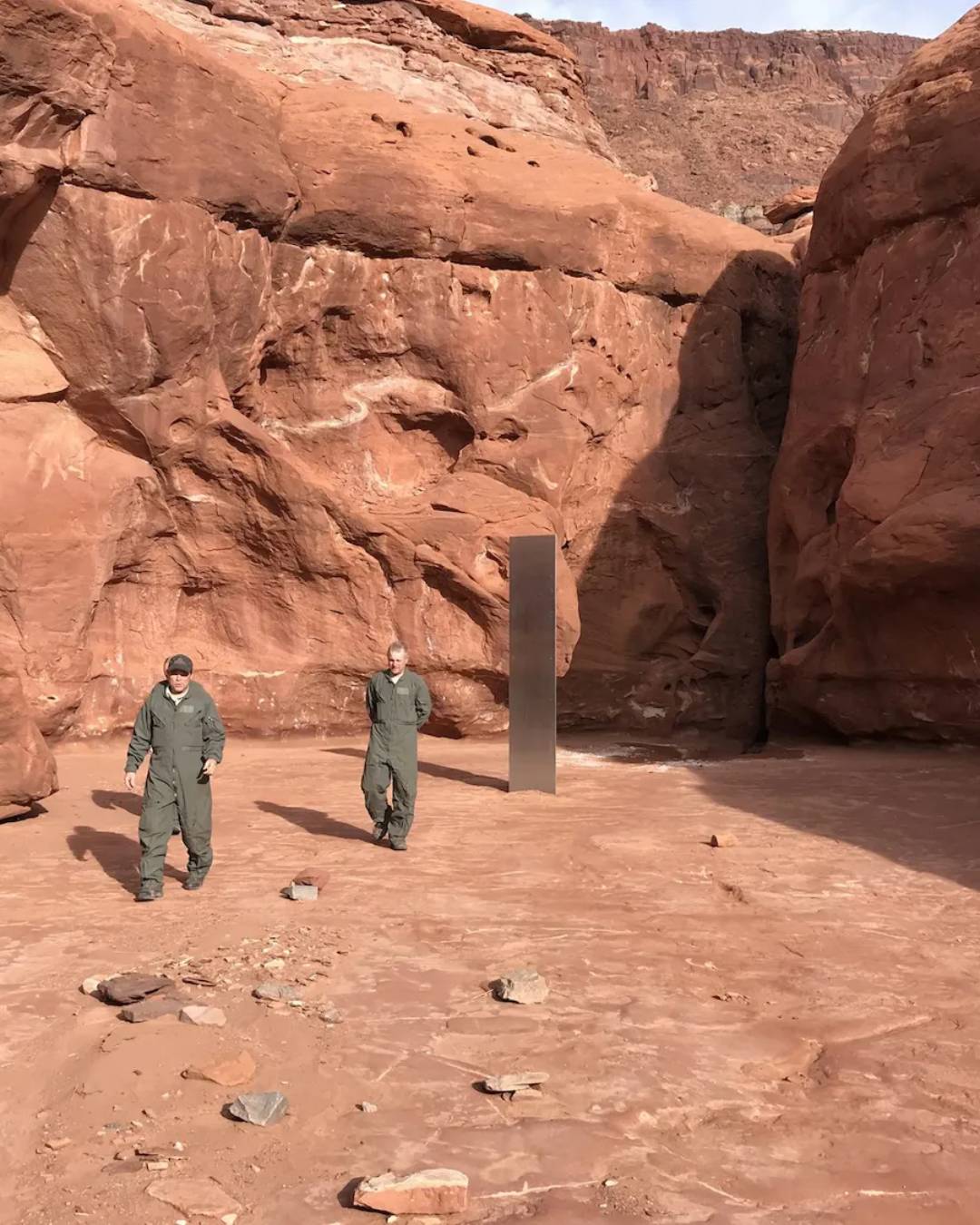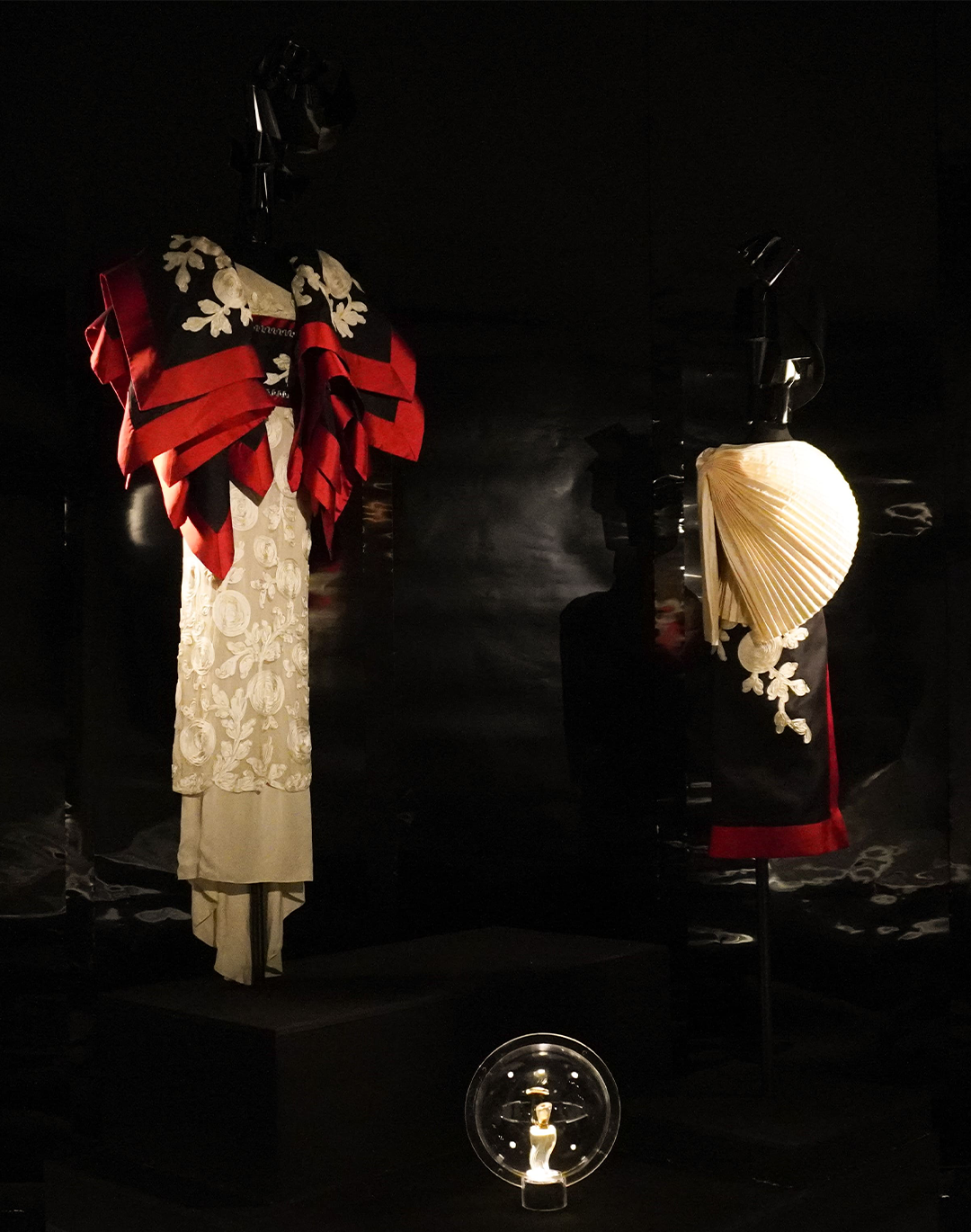
Why monoliths that appear around the world fascinate us so much The last one appeared in Nevada, as usual in the middle of nowhere
Recently, at Gass Peak, a hiking area north of Las Vegas, Nevada, a silver-colored monolith was found. This is not the first time it has happened: in recent years, objects of this type – also called prisms – have been found in various other parts of the world. But even in this case, it is not clear who brought the monolith to that spot, nor how. It was identified by the nonprofit organization Friends of Las Vegas Metro Search and Rescue, and the city police released the respective photos, which, as always, went viral. Last March, another one was found, also made of steel and about three meters high, in a field near a small village in eastern Wales – a man noticed it while walking on the moor. On that occasion too, apart from footprints in the mud immediately around the structure, there were no traces suggesting how it had been brought there. «It looks like it fell from space», the man who found the monolith told the New York Times, describing the area as a place «in the middle of nowhere». Indeed, there were no signs left by, for example, truck wheels, nor grooves made to anchor the structure in the muddy ground. Despite this, the object was well-positioned: it seemed very solid and resistant even to the often adverse weather conditions of the area. Because of its elusive nature, the monolith attracted the attention of local and international media.
@yoboyelliott I think I know why the monolith was taken back #monolith #aliens #obelisk #utah #fyp Walking On A Dream - Empire Of The Sun
It happened again with the one found north of Las Vegas, and in all the other findings in the past. Starting from 2020, in fact, there were various cases of similar objects found from one day to the next. In November of that year, for example, one appeared in a desert area of Utah. Some members of the Department of Public Safety were flying over an area in the southeast of the state by helicopter when they noticed a silver object that was definitely in contrast with the typical rocky terrain of the area. In that first finding, the authorities merely specified that it is illegal to place structures of any kind in public places, «regardless of the Planet you come from». Subsequently, over the years, other such objects were found in California, in Romania, and in Turkey.
What we know about these monoliths
@davidjustinn Update on the Utah Monolith Follow for more!!
In the case of the first monolith found, the one in Utah, the authorities did not disclose the exact location or details of the structure to prevent people from getting lost in the desert while searching for it. As often happens when there are discoveries like this, the news circulated so much on social media that several hypotheses about the origin of the monolith were made. Various users on Reddit even started analyzing some satellite images, managing to locate it and understand that it had been there for at least five years. On the evening of November 27, 2020, a few days after its discovery, the monolith was removed, but not by the authorities – who instead believe it was stolen. Shortly thereafter, local officials were to decide whether to continue investigating the origin of the monolith or move it, in case it proved to be a nuisance to local wildlife. The pilot of the helicopter from which the object was spotted told a local broadcaster that he believed it was placed there by a fan of 2001: A Space Odyssey. In the first scene of the famous 1968 film by Stanley Kubrick, an imposing black monolith is seen, which, due to its mysterious and alien nature, has always attracted the attention of viewers, and which very likely contributed to the fascination with the various findings over the years – including the latest one in Nevada. One of the most accredited hypotheses is that, in all cases, these are artistic installations. The magazine The New Art Newspaper, for example, noted a certain resemblance between the monoliths and the works of minimalist sculptor John McCracken, who lived in Santa Fe, New Mexico, until 2011 – the year he died – just a few hundred kilometers from where the first structure was found. Some users on Reddit had instead hypothesized that it could be a work by Petecia Le Fawnhawk, who is known for placing her sculptures in remote locations, but the American artist immediately denied it. Gallerist David Zwirner told the New York Times he was convinced that they are works by McCracken, while according to other specialized media they might also be tributes to him by other artists.









































